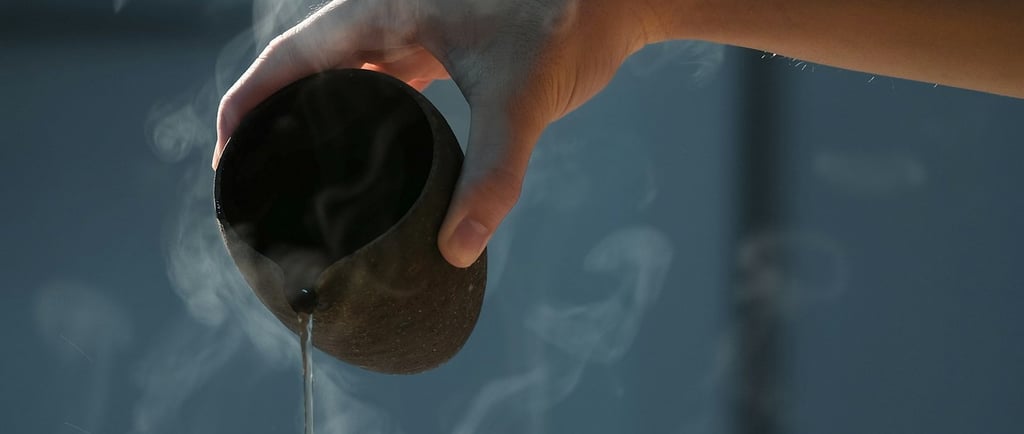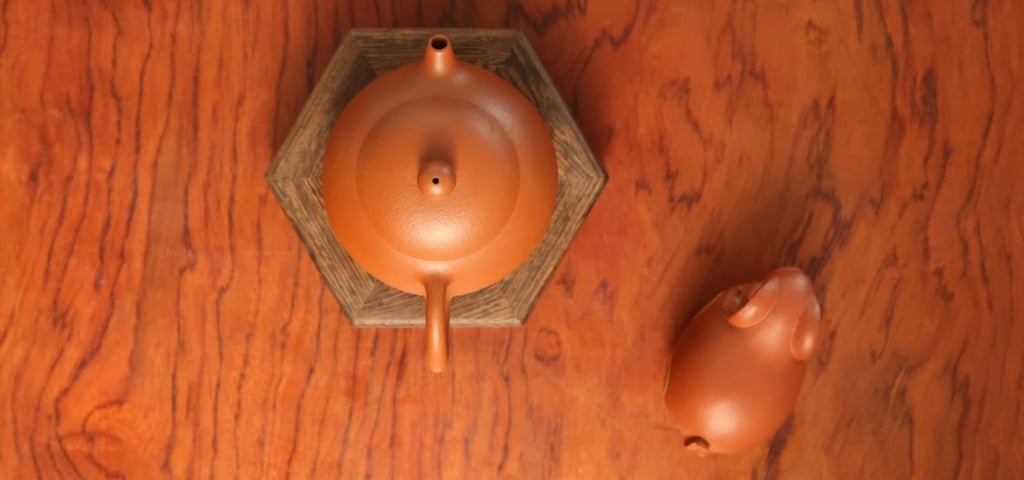Tea Table Rules You Might Be Breaking (Without Even Realising!)
Tea etiquette mistakes you might be making! Learn the unspoken rules of tea culture, from host cups to teapot spouts, and never feel out of place again.


Tea Table Rules You Might Be Breaking
TEAPOTARTISAN
Tea isn’t just about drinking—it’s a social experience. And just like dining etiquette, tea culture comes with its own set of do’s and don’ts. The problem? Most people don’t know them. So, let’s fix that.
Tea Table Rules You Might Be Ignoring
1. Do You Really Need a Host Cup?
Not necessarily. But having a designated host cup is a flex—it sets you apart, adds personality to the tea session, and lowkey shows off your style.
A yixing zisha teapot is already a sign of taste, but a unique host cup? That’s next-level. Some people go for a bold, colourful design, while others stick to classic, minimalistic styles. Either way, it’s your signature at the tea table.
And let’s be honest—bringing your own cup when you drink tea outside? It’s like having your own personal sword as a swordsman. A proper tea lover always comes prepared.
2. Is a Fairness Cup Necessary?
If you want consistent tea quality, yes. Otherwise, you’re gambling with every sip.
Here’s why:
The first pour is stronger, the last pour is weaker—without a fairness cup, everyone gets a different brew.
It helps filter out tea debris so your guests don’t get a mouthful of leaves (awkward).
That said, in some regions, tea masters skip the fairness cup and use a technique called “Guan Gong Patrolling the City”—pouring the tea directly into cups in a circular motion to balance the taste. Fancy, but hard to master.
If you’re new? Stick to the fairness cup.
3. What’s the Deal with Tea Pets?
Ever seen a tiny ceramic dragon chilling on someone’s tea tray? That’s a tea pet.
They’re purely for aesthetics, but over time, tea pets develop a glossy patina from being “fed” with tea. Some are shaped like dragons, lucky toads, or even water-squirting frogs (yes, that’s a thing).
But if you use a dry tea table setup, tea pets might not make sense. They belong to the traditional wet tea tray culture—where excess tea is poured over them.
Bottom line? Fun tradition, but not a must-have.


4. Why Shouldn’t the Teapot Spout Face Someone?
Because it’s basically giving them the "you should leave now" signal.
Beyond superstition, there’s a practical reason:
Safety – A teapot with freshly boiled water can scald someone if it spills.
Respect – Pointing a sharp object (yes, even a teapot spout) at someone is seen as impolite in many cultures.
Easy fix? Just point it away from people.
5. When Should You Change the Tea?
It depends. But if you’re hosting guests, don’t wait until the tea is completely tasteless.
Some tea lovers swap it after 3-4 brews to keep things fresh.
Others push it to the limit—drinking until there’s barely any colour left.
The golden rule? Read the room. If guests seem uninterested or are barely sipping, it’s time to swap the leaves.
Hosting tea is a social skill as much as it is a brewing technique.
Final Thought
Tea culture is more than just the drink—it’s about connection, respect, and understanding unspoken rules. Master these small details, and you’ll never feel awkward at a tea table again.
Got any personal tea etiquette stories or mistakes you’ve made? Drop them in the comments—I’d love to hear them!
FAQs
1. Do I really need a host cup?
No, but having one adds a personal touch and shows off your style. It’s like carrying your own signature tea accessory.
2. Can I skip using a fairness cup?
Yes, but it helps ensure everyone gets an evenly brewed cup of tea. Otherwise, the first pour is stronger, and the last pour is weaker.
3. Are tea pets necessary?
No, they’re just decorative. But if you love traditions, a tea pet can add character to your tea setup.
4. Why can’t the teapot spout face someone?
It’s a sign of bad manners and can even be interpreted as a subtle way of asking someone to leave. Plus, it prevents accidental spills.
5. When should I change the tea leaves?
When the flavour starts fading. If you’re hosting, don’t wait until the tea is tasteless—switch it up when guests lose interest.
